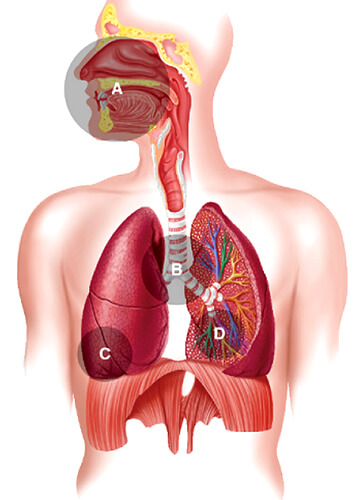PM2.5 Impact on Human Health
The suspended particulate matters contained in the atmosphere may enter into human body through nose and throat. While the particles bigger than 10μm are removed by nasal cavities, the particles smaller than 10pm can still enter into the human body through trachea and bronchus. The varying degrees of damage to human body mostly depend on particle sizes and associated chemical properties.
Moro and more epidemiological studies reveal that PM2.5 easily adheres to harmful substances, such as dioxins, polycyclic aromatic hydrocarbons (PAHs) and heavy metal. A long-term inhalation may also lead to allergy, asthma, emphysema of lung and cardiovascular disease (CVD). Whether it is short-term or long-term exposure in a high density PM2.5 environment, the risk of respiratory diseases or even death definitely increases, especially for sensitive persons.
Different Particle Sizes And Distributing
Positions Affecting Respiratory System

